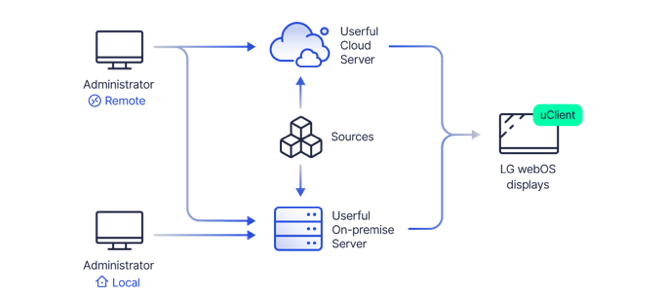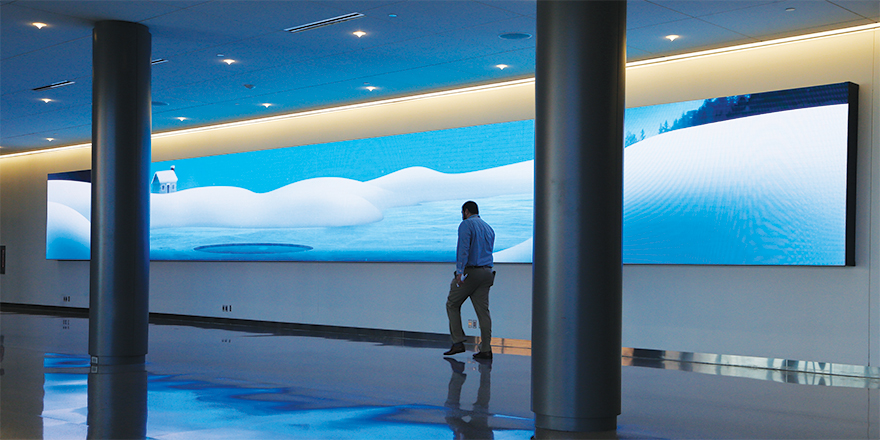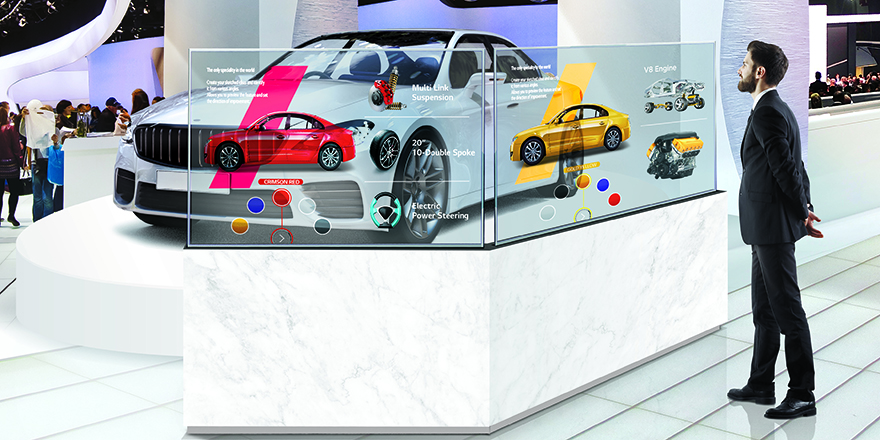Userful is a powerful AV-over-IP software solution that works directly with LG’s webOS displays enabling users to stream any content source onto any display globally in real time with no additional hardware involved.
Userful’s uClient App installs directly on LG webOS displays certified by Userful and leverages the System on a Chip inside those smart displays. Each display connects back to either an on-premise server or a Userful server in the cloud running Userful software. That single server, either on-premise or in the cloud, allows customers to do remarkable things with LG displays.
The combined Userful and LG webOS solution supports video walls for control rooms and operation centers, data and dashboard walls, LED walls, displays for corporate communication, digital signs, screens used for factory and process automation and more, all with the same lower hardware footprint.
By eliminating as much proprietary hardware as possible from deployments, Userful and LG are able to significantly reduce customers’ Total Cost of Ownership (TCO). Less hardware means less upfront costs, less hardware to maintain and replace, less electricity used, less likelihood that a customer needs to add plugs and upgrade its electrical panels. And of course less hardware means reduced support and maintenance over the life cycle of the deployment.
The combined Userful and LG webOS solution delivers an AV solution using an IT familiar stack: the key components are the network, software and a server. It is also a platform rather than a point solution. While many customers adopt Userful with LG displays for a specific single need, they are able to easily add displays and video walls for new applications using the same system and toolset. This ensures long-term scalability and allows for an even lower total cost of ownership as IT teams no longer need to learn to support new hardware or software for every new manufacturer each time they roll out a new visual display application.
When customers are investing in smart displays one of the concerns is often whether the System on a Chip processor built into the display is going to be capable of supporting their new applications and requirements in the future. The combination of Userful and LG webOS can address this concern as Userful’s server (either on-premise or in the cloud) performs as middleware. Should the customer require new or more demanding content or applications in the future, the Userful server which handles all the processing and the application layer can be relied on to handle those more demanding requirements.
There is no need to replace all the displays. If the Userful server needs to be upgraded, that’s a far lower cost than replacing all the displays. In this way Userful future proofs a customer’s investment in smart displays.
The Userful-webOS Solution is leading the way in bringing AV deployments onto the IP network. The combined solution makes it easy to deploy complex AV applications without the burden of complex and expensive AV hardware.
To make it easy for LG customers to get started with Userful’s Visual Networking Platform, Userful is offering free 1 year subscriptions to Userful Standard with purchases of select LG webOS displays, until December 31, 2020.
To learn more about Userful and this special offer, visit userful.com/lg




